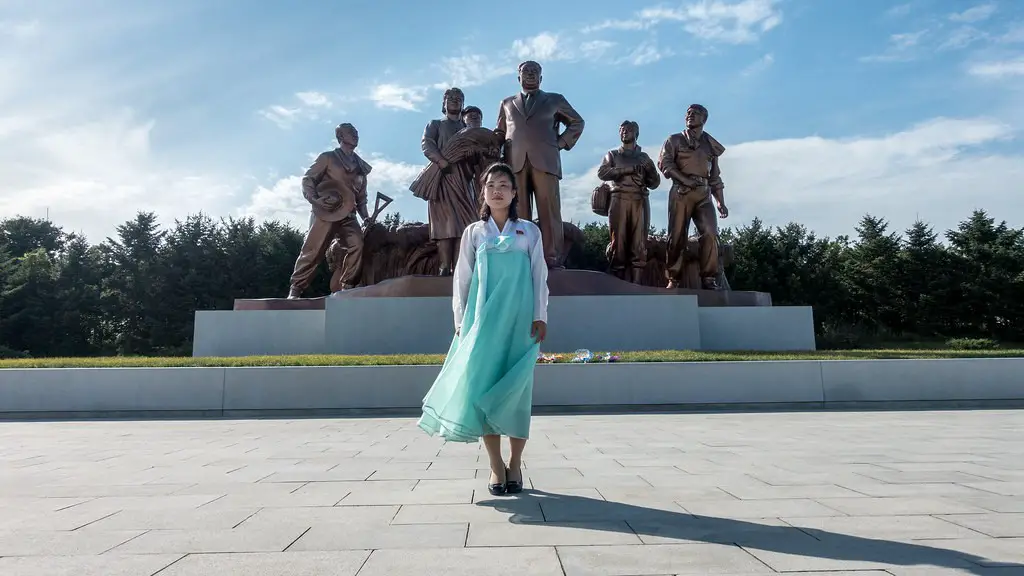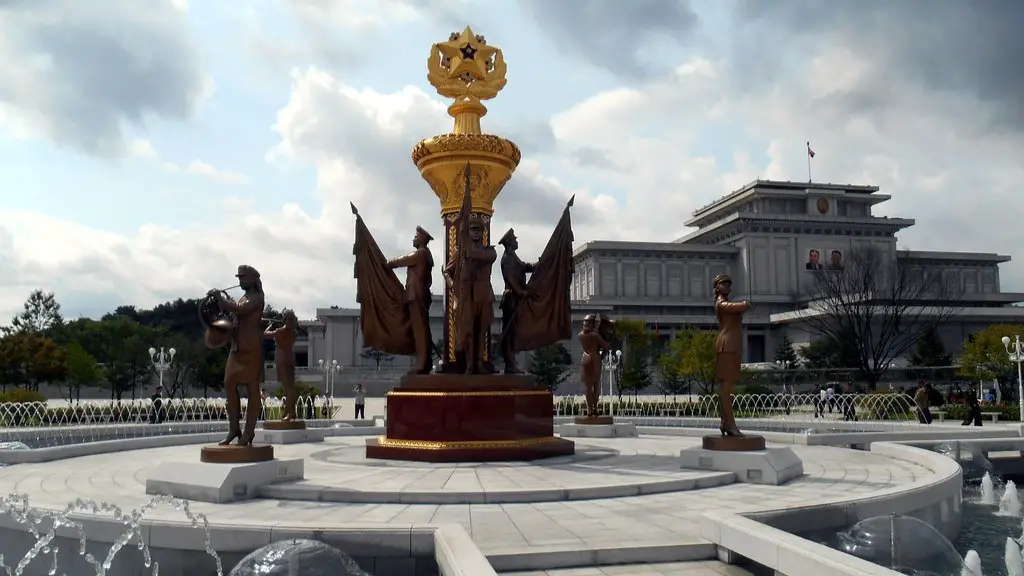Background
When Korea was first invaded by Japan in 1910, it began a period of Japanese occupation that would last until 1945. During this time, Korea was officially annexed as part of Japan, leaving the Koreans without any of their own political rights or representation. At the conclusion of the Second World War, Japan surrendered the Korean peninsula back to the international community, who had been promised independence by the Allied Forces. In 1948, amid Cold War tensions, the peninsula was divided in two; the North becoming the communist Democratic People’s Republic of Korea (DPRK) and the South becoming the capitalist Republic of Korea (ROK). This division was never formally recognized by either side, and the presence of a widely disputed land border sparked the Korean War in 1950.
Political Position
Following the end of the Korean War in 1953 a stalemate was reached, and it was agreed that a demilitarized zone (DMZ) should remain in place. This agreement, called the Korean Armistice Agreement, effectively paused the war but never resulted in a formal peace treaty; to this day, South and North Korea remain at a technical state of war. The P’anmŭnjŏm Declaration in 2018 created much-anticipated hope of peace, however, with Kim Jong-un’s announcement of a “new era of peace”. Since then, both sides have been making strides towards reconciliation, with Kim awarding President Moon with the Order of Korean Unification, the two leaders agreeing to gradually disarm the Korean Peninsula and pledges to open up borders.
Cultural Influences
Korea has had a strong but highly divided culture for centuries. The Korean language, for example, remains consistent throughout both North and South Korea, and many aspects of the culture such as family dynamics and traditional history remain constant. However, the political influences from both China and Russia have led to significant differences in cultural values, lifestyle and modern outlook. South Korea has always been driven by consumerism and technological advancement, whereas North Korea has historically placed a stronger emphasis on collectivism and traditionalism.
Contemporary Effects
The divide between South and North Korea is disproportionally evidenced in the difference in living standards.South Korea’s economy is rapidly developing and has become one of the “Asian Tigers” alongside Taiwan, Hong Kong, and Singapore.While it remains one of the most technologically advanced countries in the world ands economy is now significantly larger than North Korea’s, North Korea has been dealing with poverty and disease since the90s. North Korea also continues to rely on China’s diplomatic, economic and military support while South Korea maintains a close alliance with the United States.
International Relations
Since the division, South Korea has had a history of friendly relations with many countries around the world, becoming a pillar of international stability in the Asia-Pacific region. The United States has been a particularly strong ally throughout this time, hosting a significant military presence just outside of Seoul and providing economic support in the form of vouchers and trade agreements. North Korea, on the other hand, has only ever had a handful of allies and has been under severe sanctions from the United Nations for its consistent violations of human rights.
Prospects for Unification
Since the end of the Korean War, both North and South Korea have hoped for the prospect of reunification, however, it remains unlikely that their political visions can be reconciled in the near future. Although both Kim Jong-un and Moon Jae-in have expressed interest in eventual reunification, the two countries remain deeply divided on a range of practical matters such as trade, security, and political power. Since the latest summit between the two leaders, there have been incremental steps towards progress but the two Koreas’ prospects of reunifying remains uncertain.
International Public Opinion
Reception to South-North Korean relations has been mixed, with many of the intentions dependent on a global scale. For instance, countries such as the United States and Japan are cautious to trust North Korea’s sincerity. Furthermore, countries in South East Asia such as Vietnam, Singapore, Thailand and the Philippines have expressed support for the peace process, and have fostered a productive relationship with North Korea. For many, the success of unification efforts on the Korean Peninsula would be welcomed, not only for the rewards that could be offered to the Koreas, but also for the international relations that could be improved as a result.
The Role of Media
Aspects of the media continue to be an important factor in driving public opinion and coverage of the Koreas. In North Korea, Kim Jong-un maintains tight controls over national media in an attempt to protect the national identity, while in South Korea media freedom is allowed, albeit still heavily controlled by the government. To try to reach out to North Korea, the South has sponsored a number of broadcast and live interviews, though these have had limited success in penetrating the North’s protective boundaries. Meanwhile, international media outlets, including the BBC and CNN, have reported extensively on the Koreas, covering both their cultural and political differences.
The Impact of Globalization
One of the biggest challenges that both Koreas are facing is the impact of globalization on the peninsula. The economic success of the South has allowed multinational corporations and the South Korean government to extend their influence on North Korea in ways that the North find unacceptable, such as the increased manufacture of consumer goods that compete with North Korea’s own products. The North has also become increasingly wary of international sanctions, including those related to nuclear activities that are seen as a threat to its security. At the same time, South Korea is slowly opening up to foreign investment and investment from other countries, which offers another layer of economic and political tension for the two Koreas.
The Impact of Technology
The use of technology has been a major factor in deepening the divide between the two Koreas. South Korea is one of the most advanced countries in terms of and the Republic of Korea actively encourages technological innovation, from the development of a nuclear industry which is greatly opposed by the North to the adoption of 5G mobile technology. Meanwhile, North Korea remains largely in the digital dark ages, as the Kim regime maintains stern controls over internet access and the spread of technology within its borders. As a result, the North is isolated from the vast majority of the world’s advancements, making reunification less likely due to the vast discrepancies in lifestyle expectations.


